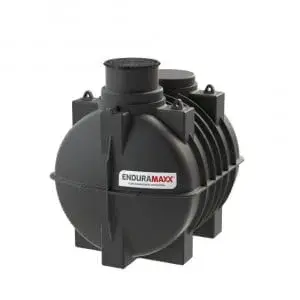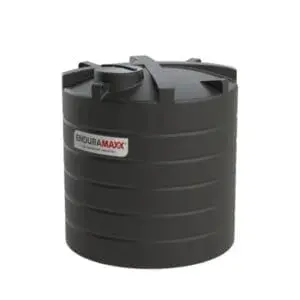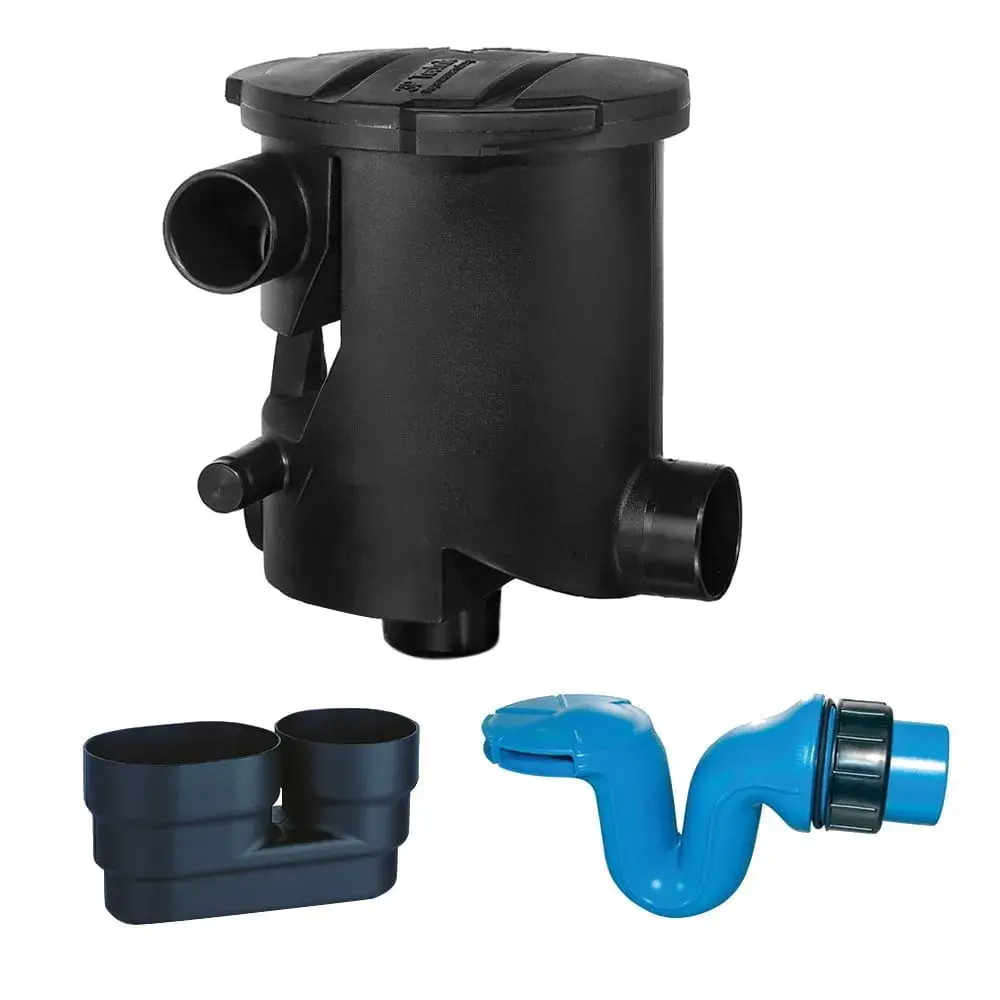Enduratank’s extensive catalogue of polyethylene storage tanks is suitable for a variety of applications in a wide range of industries, including agriculture, chemical production, food and brewing, construction, and manufacturing. They can be used to store potable and non-potable water, chemicals, fertiliser, used for distilling and fermentation, or as settlement units.
Despite a tank being a significant investment for any business, when considering installing a tank of any kind for their application, many customers will rely on their own knowledge when deciding what their needs are. This lack of relevant expertise can result in issues later down the line, which can prove costly, not just financially, but in terms of time. In some cases, these problems may even be hazardous or pose a risk to humans, animals, watercourses, or the environment. At Enduratank, we see the same mistakes over and over. Make sure you don’t make the same ones by following our advice.
1) Inaccessible storage tanks
When planning where to install a tank, all too often, the issue of accessibility, once it’s in place, is forgotten about. This can be a particular issue when a tank is installed during the construction phase of a building. It’s not until the tank needs servicing and maintenance, or has reached the end of its life expectancy, that the problem becomes obvious. Without easy access around the tank, it can be difficult to rectify any problems that may have arisen, especially when the tank is against, or very near to, a wall.
The problem of inaccessibility is even more serious when a tank needs replacing. While the old tank can be cut up to be removed, the new tank must be installed as one piece. This can be a real problem. In some cases, it has led to organisations having to remove walls or roofs to be able to replace the tank, adding significant additional costs to the project.
It’s not only walls that can be an issue when it comes to space and accessibility. Often a number of tanks are installed together, and pipework or limited space between the tanks are other common problems that can become apparent when it’s time to replace an old tank.
When designing a new construction that will include tanks, organisations need to plan ahead. Consideration should be given as to how easy access to the tanks will be ensured, and how easily a replacement tank can be installed, taking into account issues such as plumbing and fixtures, location within the building, and the size of doorways.
2) Rigid pipework
Polyethylene can expand and contract. The slight alterations in size can damage plumbing, or the tank itself. In both cases, this can lead to breakages, splits, and leaks, which can be a serious problem. Depending on the application the tank is being used for, it is also potentially hazardous. This is why flexible pipework is necessary.
There is a misconception that flexible pipework is more likely to break and leak, but installing flexible connections on the bottom half of the tank, it’ll help to prevent the problems associated with the expansion and contraction of polyethylene tanks. It’s also important to ensure that the flexible piping is properly aligned with the fittings, as incorrect installation may prevent it from acting as it should, leading to breakages and leaks.
 3) Inadequate venting
3) Inadequate venting
In certain applications, such as chemical storage, adequate venting is essential for ensuring a safe operation. Unfortunately, too many organisations underestimate the amount of venting needed or may decide to reduce it. Inadequate venting means that the cubic feet per minute (CFM) of airflow is not enough to guarantee that the tank and associated system is compliant with health, safety and environmental regulations, or that it is safe to operate without the tank sides caving etc. This mistake can also invalidate the warranty on the tank so that any problems can become costly to fix.
4) Incorrect torque on fittings
The correct torque (or tightness) of fittings is essential for ensuring a leak-free system. While fittings are set to the right torque when the tank is manufactured, transport and installation can cause them to loosen. That’s why Enduratank recommends that all fittings are checked and retorqued according to our operating standards when a tank is installed and that the tank be filled with water to test all connections before any potentially hazardous liquid is added. It can be tempting to ‘save time’ by ignoring Enduratank’s recommendation to test the tank’s fittings torques with water but, should the torque be incorrect, the results of a chemical leak can prove costly in terms of both time and money, making it a clear false economy.
 5) Inadequate outlet support
5) Inadequate outlet support
It can be assumed that pipework to and from the tank outlet is strong enough and rigid enough to support itself, and so doesn’t need any additional bracing. This isn’t true. No matter what type of pipework is attached to the outlet, adequate support is essential for the safe operation of the tank. Inadequate outlet support places stress on the fittings and tank wall that, over time, can lead to breakages, splits, and leaks. Again, dependent on the liquid being stored, this can be a potential hazard that will cost time and money to put right.
The Enduratank difference
Whatever your business or application, whatever the required capacity, Enduratank can help. Alongside our extensive standard range of high-quality polyethylene tanks, we can also customise tanks to meet any organisation’s individual needs. All of our tanks are constructed from a single piece of high-density polyethylene. This one-piece, the seam-free design minimises the risk of leakage and reduces the need for maintenance. The robust polyethylene also offers high resistance to chemicals, making these tanks suitable for storing any liquid without risk of contamination.
For more information or to talk to one of our sales team, call 01778 562810.
Posts By Topics
- Blog (303)
- Chemical Storage Tanks (118)
- Chemical Dosing Tanks (114)
- Chemical Tanks (114)
- Water Tanks (58)
- Rainwater Harvesting Tanks (43)
- Vertical Rainwater Tanks (31)
- Vertical Storage Tanks (31)
- Cone Bottom Tanks (19)
- Conical Cone Tanks (18)
- Rainwater Harvesting (17)
- Water Bowsers (15)
- Horizontal Tanks (14)
- Potable Water Tanks (13)
- Farming (9)
- Case Studies (8)
- Industrial Storage Tanks (7)
- Liquid Fertilser Storage Tanks (6)
- WRAS Approved Potable Tanks (6)
- Wine and Beer Production (6)
- Horizontal Transport Tanks (5)
- Microbrewery (5)
- Rainwater (5)
- Category 5 Break Tanks (4)
- Cider Production (4)
- Mixer Tanks (4)
- Molasses Tanks (4)
- Polyethylene tanks (4)
- Rainwater Filter Kits (4)
- SPECIALIST & BESPOKE TANKS (4)
- Bunded Tanks (3)
- Slimline Tanks (3)
- WRAS Approved (3)
- Clarification Tanks (2)
- Crosslinked Polymer Tanks (XLPE) (2)
- Fertiliser Tanks (2)
- Sump Tanks (2)
- Tank Installation (2)
- Water Butt (2)
- underground water tanks (2)
- ACCESSORIES & FITTINGS (1)
- ATV & UTV SPRAYING UNITS (1)
- Above Ground Effluent Tanks (1)
- Bespoke Tank Frames (1)
- Category 5 Turret (1)
- Caustic Soda Tanks (1)
- Closed Top Bunded Tanks (1)
- Craft beer (1)
- Effluent Tanks (1)
- Enduramaxx (1)
- Ferric Chloride Tanks (1)
- Fire Safety Regulations (1)
- Fire Sprinkler Water Storage Tanks (1)
- Industrial Water Tank (1)
- Open Top Bunded Tanks (1)
- Open Top Cone Tanks (1)
- Open Top Vertical Tanks (1)
- Polyethylene Potable Water Tanks (1)
- Polyvinylidene Fluoride (PVDF) Tanks (1)
- Polyvinylidene Fluoride Tanks (PVDF) (1)
- Pressure Washers (1)
- Pro Series Spot Sprayers (1)
- RWH (1)
- Sodium Hydroxide Storage Tanks (1)
- Sprayer Fill-up Tanks (1)
- Uncategorised (1)
- liquid fertiliser tank (1)
Sign up to the newsletter
enduramaxx.marketing
Related Posts
Bumper Apple Harvest: Cone Bottom Tanks Bring Cider Makers Success
Amongst the growers reporting 2015 to be a record apple harvest are the monks of Ampleforth Abbey...
Calling Cider Makers and Craft Brewers!
Whilst cider making and brewing have been around for literally thousands of years it wasn’t until...
Craft Brewery Growth in the UK - Enduramaxx Ltd
Craft brewery storage tanks – the popularity of craft beers throughout the United Kingdom has...
Related Products
From £1,080.00 inc. VAT
£900.00 exc. VAT
From £1,344.00 inc. VAT
£1,120.00 exc. VAT
From £768.00 inc. VAT
£640.00 exc. VAT
£480.00 inc. VAT
£400.00 exc. VAT






